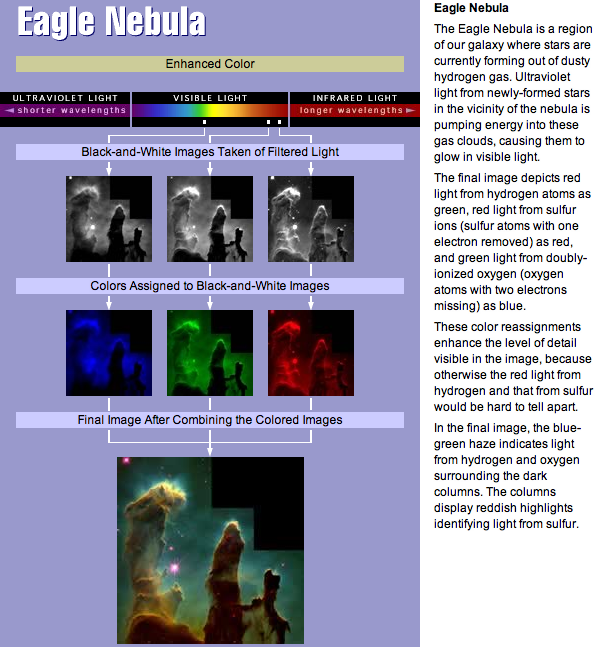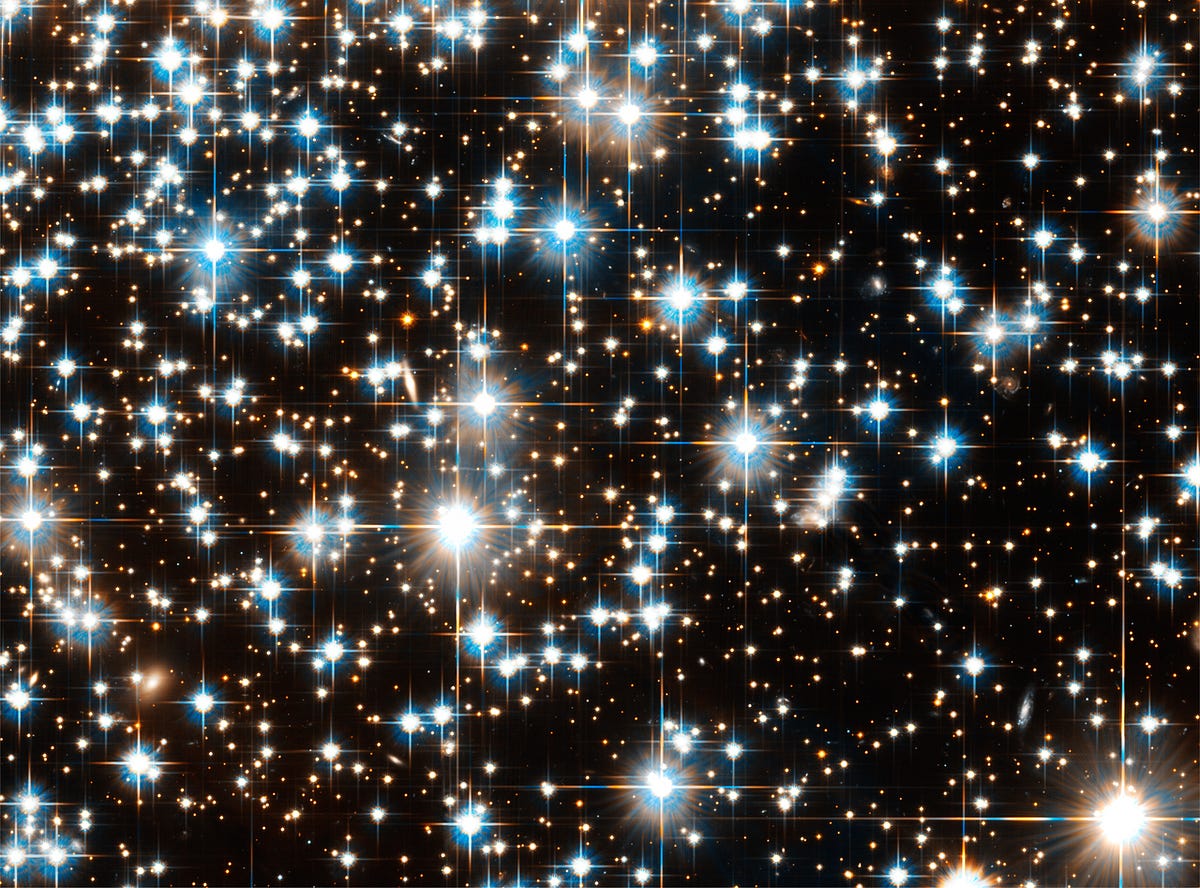The secret of the galaxy’s most famous nebula
Summer is coming, and with it, the most famous nebula in the night sky.
“The self-same atoms which, chaotically dispersed, made the nebula, now, jammed and temporarily caught in peculiar positions, form our brains; and the ‘evolution’ of brains, if understood, would be simply the account of how the atoms came to be so caught and jammed.” –William James
Up in the heavens, there are planets, stars, and galaxies all clearly visible in the night sky. The deeper we look, the more we find. Even with just your naked eye, what you can see on a clear night is absolutely stunning.

But those stars that you see weren’t always there, and they won’t be there forever. Not counting the galaxies, the other main class of object in the night sky — the nebulae — come in two types. On one hand, there are the nebulae that result from the death throes of stars, dying in either a supernova explosion or in a gentler blowing-off of their out layers in a planetary nebula.

This release of around 50% of the mass of the star into interstellar space puts enough hydrogen gas out into space that some day down the road, this gas could get another chance to burn as fuel in the nuclear furnace of another generation of stars.
But the other type of nebula — including the most famous of nebulae — represents a race to form that immediate next generation of stars.

Of course, this hardly looks like a famous nebula; like practically all nebulae visible through a small telescope, it appears like a faint, fuzzy cloud, mostly whitish in color. It’s only if you look at the various wavelengths — and in particular, at an important hydrogen emission line — that you can see a red tint to it if you gather enough light: a telltale sign of new star formation.
Of course, you might recognize this — far more well-known — view of our “most famous nebula” a little bit better.

These famous gaseous structures — the Pillars of Creation — are located at the heart of the Eagle Nebula, and tell part of the story of where new stars in the Universe come from.
Practically every spiral galaxy in the Universe, including our own Milky Way, has significantly more hydrogen gas in it than it has stars, in terms of mass. Most of that gas is diffuse, but in a few locations, the gas has clumped together into large molecular clouds, some of which we can see thanks to their light-blocking power.

Over time, this cool gas will collapse under its own gravity, contracting into denser and denser regions.
When the temperature of those most dense regions inside rises to the critical value necessary to initiate nuclear fusion, a new star is born, and then the great cosmic race begins in earnest.

From deep inside these clouds of interstellar gas, gravity works to pull every atom in that it can and form more and larger stars. But the stars themselves emit intense, ultraviolet light, evaporating and ionizing the surrounding gas and blowing it out into the interstellar medium.
Eventually, after maybe 10% of the total gas that made the parent cloud has formed objects like stars and planets that cannot be blasted apart by mere radiation, the stars inevitably win.

What gets left behind is a star cluster — in our galaxy in particular, what we see as open star clusters — which is where our Sun was born about 4.5 billion years ago.
So when you look up at the night sky and see those faint nebulae, with their reddish hues from the recombination radiation of hot, UV-ionized hydrogen, you are watching the last stages of that great cosmic star-formation race.

So why, then, do the most famous pictures of these nebulae not look red at all, but rather colorized in this multichromatic fashion?

This false coloring is done by taking narrow-line spectroscopy of the nebula in three different bands, with each band sensitive to the light that’s emitted from a particular element. Although the light coming from the hydrogen atoms far outstrips the light from all other elements, and is red, it is shown in the above composite in green, while oxygen (in blue) and sodium (in red) are more heavily weighted in order to balance out the false color displayed in the final image.

There are pros to this, but there are also cons. On the minus side, the human eye would never see anything like this from looking at any part of the Eagle Nebula.
On the plus side, the false coloration definitely brings out the contrast of the gaseous regions, including the 4-light-year-long Pillars of Creation shown earlier, and also the even larger Fairy of the Eagle Nebula. Both of these dusty structures are in the final stages of forming new stars inside, while they are slowly obliterated from both internal and external ultraviolet radiation.

These structures — known as Evaporating Gaseous Globules or EGGs — are the locations of the last stars that will finish forming in these great nebular complexes.
The race between gravity and photoevaporation is one that will be no contest in every known nebula, with perhaps 90% of the gas failing to make it into a star or planet. When all of the EGGs are gone, it’s just a matter of time before the rest of the gas remnants are boiled away by the newly formed stars, until only a brilliant star cluster is left.

And the remaining gas will return to the intergalactic medium, where it will cool, waiting for another chance to find its way into a molecular cloud. And when it does, that molecular cloud, too, will someday contract, and the process of star formation can begin all over again.
That’s the secret that lies inside every star forming nebula in our galaxy, including our most famous one. And now you know the secret, too.
An earlier version of this post first appeared at the old Starts With A Bang on Scienceblogs. Weigh in there at the new Starts With A Bang forum!





